This article was co-authored by Jennifer Butt, MD and by wikiHow staff writer, Janice Tieperman. Jennifer Butt, MD, is a board certified Obstetrician and Gynecologist operating her private practice, Upper East Side OB/GYN, in New York City, New York. She is affiliated with Lenox Hill Hospital. She earned a BA in Biological Studies from Rutgers University and an MD from Rutgers – Robert Wood Johnson Medical School. She then completed her residency in obstetrics and gynecology at Robert Wood Johnson University Hospital. Dr. Butt is board certified by the American Board of Obstetrics and Gynecology. She is a Fellow of the American College of Obstetricians and Gynecologists and a member of the American Medical Association.
There are 25 references cited in this article, which can be found at the bottom of the page.
This article has been viewed 182,630 times.
So, you’re adding a new member to your family—congratulations! Figuring out if your little one is a boy or a girl is one of the most exhilarating parts of being an expectant parent, and you probably want to know as soon as possible. You’ve come to the right article. We’ve taken a deep dive into just about every myth, wives’ tale, and test out there, so you can get the most conclusive info possible.
Steps
Myths and Wives’ Tales
-
1Skull Theory: Some people believe that baby boys and baby girls have different skull shapes. The basic idea of this theory is that baby boys tend to have bigger, squarish heads, while baby girls have curvier, rounded heads. Unfortunately, there’s really no scientific evidence to support this theory—but it can still be a fun way to “guess” your baby’s sex ahead of time.[1]
-
2Baby Heart Rate: An old wives’ tale claims that a baby’s heart rate in the womb can indicate their sex. According to the myth, babies with a heart rate lower than 140 are more likely to be boys, and babies with a heart rate higher than 140 are more likely to be girls. The medical community has long since debunked this “method.” Still, there’s no harm in jotting down your little one’s heart rate and making a guess, anyway.[2]
- A baby’s heart rate stays in a consistent range as they grow and develop in the womb. This range doesn’t depend on the baby’s sex.
Advertisement -
3Baby Bump Shape: A common pregnancy myth is that baby boys and girls create different “bumps.” As the old wives’ tale goes, a high, protruding bump means you’re having a boy, while a low, well-distributed bump means you’re having a girl. Truthfully, a baby’s sex doesn’t really change the size of the bump—it just depends on how the baby is laying in the womb.[3]
- There’s no harm in seeing how you’re carrying, though! Just don’t use the size or shape of your bump as conclusive proof that you’re having a boy or a girl.
-
4Linea Nigra Position: Some believe that the pigmentation on your stomach can predict your baby’s sex. Most pregnant women develop a linea nigra, or a pigmented, vertical line that runs over their stomach. According to myth, a line that stops at the belly button means you’re having a girl, while a long line that goes up toward your chest signifies a boy. Naturally, there’s no scientific proof to back this up, but it still can be fun to check out.[4]
-
5Nipple Color: Certain pregnancy myths associate darker nipples with having a boy. This actually isn’t true, as most women develop darker nipples during pregnancy because of hormonal changes.[5] Still, if you’d like to buy into this myth just for fun, more power to you!
- The same hormones that make your nipples look darker also create the linea nigra on your stomach. They also tend to darken the shade of your moles and beauty marks.
-
6Breast Size: A bigger left breast allegedly means you’re having a girl. Feel your chest and see if one of your breasts feels larger than the other. According to a wives’ tale, a larger left breast points to having a baby girl, while a larger right breast points to having a baby boy. Naturally, there’s no actual proof that this is true, but there’s no harm in checking yourself just for fun.[6]
- Developing larger breasts is a super common side effect of pregnancy, but the size of your chest has nothing to do with the sex of your baby.
-
7Complexion Changes: According to a common pregnancy myth, a baby girl will “snatch away” your good complexion and leave you with acne.[7] Truthfully, getting acne while pregnant has nothing to do with the sex of your baby and everything to do with the hormonal changes happening in your body at the time.[8]
- There’s no harm in playfully guessing that you’re having a girl based on your acne, as long as you know that there’s no medical evidence to back that claim up.
-
8Dry Hands: Dry hands are a rumored sign of baby boys, while soft hands are linked to baby girls. This myth isn’t true at all—your body is going through a lot of changes during pregnancy, and getting dry, itchy skin is a really common side effect.[9]
-
9Food Cravings: Carrying a boy allegedly makes you crave salt, and carrying a girl makes you crave sweets. As fun as this myth is, there’s no real truth to it. Food cravings are a really typical pregnancy symptom, but they’re usually linked to nutrients that your body needs. Craving potato chips over ice cream doesn’t play a role in your baby’s sex.[10]
- There’s nothing wrong with playfully blaming your sweet or salty snack habits on your little one, as long as you’re not seriously believing in the myth.
-
10Moodiness: Some people believe that carrying a girl can make you extra moody.[11] This is totally false—mood swings are just a normal part of pregnancy and don’t carry any evidence about the sex of your baby.[12]
- A lot of pregnancy mood swings are related to stressors about being a parent, and have nothing to do with your baby’s sex whatsoever.
-
11Ancient Calendars: Some people believe that ancient Chinese and Mayan calendars can predict a baby’s sex. By cross-referencing the age and time of your child’s conception with either of these charts, you can “figure out” what your baby’s sex is. Naturally, there’s no conclusive proof that either of these charts work, but they still could be fun to try out.[13]
- You can find both Chinese and Mayan gender predictors online.
-
12Baking Soda Test: According to the myth, expectant mothers pee into a cup and mix a little baking soda into it. A fizzing reaction means that you’re having a boy, while a non-fizzing reaction means that you’re having a girl.[14] There’s no evidence that this method actually works, but there’s no harm in giving it a try (as long as you don’t mind peeing in a cup).
-
13Key Test: The way you pick up a key off the ground can allegedly identify your baby’s sex. As the legend goes, grabbing the key by the curved upper part means that you’re carrying a girl, while grabbing it by the narrow, notched part means you’re having a boy. There’s absolutely no truth to this method whatsoever, but it’s perfectly harmless to try if you’re still curious.[15]
- According to this same myth, picking up the key in the very center means that you’re having twins.
-
14Garlic Test: Women carrying baby boys allegedly smell like garlic after snacking on a piece of it. If you eat a piece of garlic and don’t reek afterward, you’re apparently having a girl. There’s definitely no evidence that this method can help determine your baby’s sex, but there’s no harm in trying it if you really want.[16]
- Garlic is really potent, which is why you might smell garlicky yourself after eating a clove. It has nothing to do with the sex of your baby.
-
15Ring Prediction Test: Swinging a ring over your baby bump can allegedly identify the baby’s sex. For this test, someone swings a ring over your baby bump. If the ring moves in a line, you’re apparently having a boy; if it moves in a circle, you’re having a girl. There’s absolutely no evidence that this test proves anything, but it can still be something fun and silly to try at home.[17]
-
16
Scientific Ways to Determine Sex
-
120-Week Ultrasound: As an expectant mother, you’ll be having regular check-ins with your doctor to monitor your pregnancy and the baby’s development. At around 20 weeks, your doctor can take a close look at the ultrasound and let you know if you’re having a boy or a girl.[20]
- At 20 weeks, your doctor looks for signs of either male or female genitalia on the ultrasound, which helps them conclusively figure out your baby’s sex.[21]
- This is the most definitive way to identify a baby’s sex.
-
2Fetal DNA Test: DNA tests are a non-invasive way to get conclusive proof about your baby’s sex. Once you’re at least 9 weeks pregnant, you’ll get a small amount of blood drawn and tested for the presence of a Y-chromosome. If the blood test confirms a Y-chromosome, it’s safe to assume that you’re having a boy. If no Y chromosome shows up on the test, you’re most likely having a girl.[22]
- Medical experts agree that this procedure is totally safe and doesn’t pose a risk to you or your baby.
- Fetal DNA tests are around 98% accurate, so you can be confident in whatever results your doctor gives you.
-
3Nub Theory: Although you can’t get a detailed look until at least 14 or 15 weeks, some medical professionals can analyze the angle of the genitalia—also known as the “nub”—to make an educated guess on the baby’s sex. According to “nub theory,” flat or down-pointing genitalia belongs to a girl, while pointed up genitalia belongs to a boy.[23]
- Research suggests that nub theory is around 87% accurate, which makes it a fairly safe way to tell if you’re having a boy or a girl.
-
4Extreme Morning Sickness: According to one particular study, women pregnant with baby girls often experienced more extreme symptoms of nausea and vomiting, though this data isn’t 100% conclusive.[24] If you’re dealing with some pretty bad symptoms, a baby girl might be the cause.
- Keep in mind that morning sickness is a super common symptom, especially when your pregnancy is first starting out.[25] The severity of nausea and vomiting really depend on the person, and don’t guarantee whether you’ll have a boy or a girl. Plenty of mothers have had terrible morning sickness while carrying sons, after all!
- Some people think that feeling nauseous is a sign of an unhealthy pregnancy, but this isn't true at all.
-
5Forgetfulness: Being extra forgetful can mean that you’re having a baby girl. During one study, various pregnant women were asked to take several tricky memory and spatial tests. Overall, women carrying boys got better scores on these tests than women carrying girls.[26] So, if your memory seems to less than its best, there’s a chance that you could be pregnant with a baby girl.
- The research on memory and a baby’s sex isn’t always conclusive and consistent. Plus, some people naturally have better memories than others—the sex of your baby could have nothing to do with it.
-
6Extra Stress: A small amount of research potentially links extra stress with having a girl. In one particular study, researchers groups of pregnant women experiencing physical or psychological stress. These women ended up giving birth to more baby girls than boys.[27] So, if you’re feeling extra stressed during your pregnancy, you could possibly be having a baby girl.
- At a 21:20 ratio, baby boys (on average) are slightly more common than baby girls. In this limited study, the psychologically stressed women ended up having baby girls and boys at a 3:2 ratio. The physically stressed mothers gave birth to girls and boys at a 9:4 ratio.
-
7Extra Hunger: Eating extra food could be a sign that you’re carrying a boy. In one study, researchers found that women carrying baby boys ate 10% more calories than women carrying baby girls.[28] If you feel like you’re eating way more than you usually do, you just might be pregnant with a son.
- Keep in mind that increased appetite is a fairly common pregnancy symptom, and feeling extra hungry isn’t conclusive proof that you’re having a boy versus a girl.[29]
-
8Food Aversions: One study possibly links increased food aversions with having a baby boy. In the study, women carrying baby girls tended to have fewer food aversions after the first trimester, while mothers carrying sons experienced food aversions in both the first and second trimesters.[30] So, if you’ve dealt with some pretty long-lasting food aversions during your pregnancy, there’s a chance that a baby boy could be to blame.
- Food aversions are pretty common during the beginning of pregnancy.[31] Dealing with food aversions during your first trimester doesn’t prove that you’re specifically having a boy or girl.
-
9Partner’s Family Tree: Your partner’s siblings and relatives can possibly shine some light on your baby’s sex. According to researchers, the father’s gene pool influences the chances of your baby either being a boy or a girl.[32] Take a look at your partner’s family tree—if he has a lot of sisters, there’s a chance your baby could be a girl. If he has many brothers, your baby could end up being a boy.
- This isn’t a fully conclusive way to identify your baby’s sex, but it can be an interesting way to shed some light on the possibilities.
-
10Ramzi Theory: The Ramzi Theory uses the location of the placenta to identify a baby’s sex. According to Dr. Saam Ramzi Ismali, a left-positioned placenta means the baby will be a girl, while a right-positioned placenta means the baby will be a boy. This method lets parents identify the baby’s sex at around 6 weeks, but there isn’t a lot of research to back it up so far.[33]
- A baby’s genitalia doesn’t distinctly form until at least 9 weeks of pregnancy, which makes some OB/GYN doctors hesitant to support the Ramzi Theory.
Community Q&A
-
QuestionI heard if it’s written F on ultrasound that it is a girl, is that right?
 KemiCommunity AnswerF stands for Female, so yes, that’s right. This also goes the other way around; M stands for Male, so if it says M, that means you’re having a boy.
KemiCommunity AnswerF stands for Female, so yes, that’s right. This also goes the other way around; M stands for Male, so if it says M, that means you’re having a boy.
Warnings
- Old wives’ tales and pregnancy myths can be a fun way to guess your baby’s sex, but they should only be taken with a grain of salt. Ultimately, the only way to definitively learn your baby’s sex is through a medical scan or test, like an ultrasound or fetal DNA sample.⧼thumbs_response⧽
References
- ↑ https://www.livescience.com/42687-skull-theory-baby-sex.html
- ↑ https://www.hopkinsallchildrens.org/Patients-Families/Health-Library/HealthDocNew/Old-Wives-Tales
- ↑ https://www.bbc.com/future/article/20120320-can-babys-bump-predict-gender
- ↑ https://eirmc.com/blog/entry/boy-or-girl-wacky-pregnancy-myths-about-gender
- ↑ https://www.hopkinsallchildrens.org/Patients-Families/Health-Library/HealthDocNew/Old-Wives-Tales
- ↑ https://rmccares.org/2020/08/11/pregnant-how-to-guess-if-youre-having-a-boy-or-a-girl/
- ↑ https://utswmed.org/medblog/gender-prediction/
- ↑ https://my.clevelandclinic.org/health/diseases/21792-hormonal-acne
- ↑ https://eirmc.com/blog/entry/boy-or-girl-wacky-pregnancy-myths-about-gender
- ↑ https://www.nct.org.uk/pregnancy/worries-and-discomforts/common-discomforts/gender-positions-and-cravings-pregnancy-truth-or-myth
- ↑ https://www.todaysparent.com/pregnancy/9-old-wives-tales-for-predicting-gender/
- ↑ https://americanpregnancy.org/healthy-pregnancy/pregnancy-health-wellness/mood-swings-during-pregnancy/
- ↑ https://rmccares.org/2020/08/11/pregnant-how-to-guess-if-youre-having-a-boy-or-a-girl/
- ↑ https://www.unitypoint.org/cedarrapids/infants-article.aspx?id=780967d6-a35a-4a13-9a8b-02bed57aa2db&title=Old+Wives+Tales+Gender+Predictions
- ↑ https://rmccares.org/2020/08/11/pregnant-how-to-guess-if-youre-having-a-boy-or-a-girl/
- ↑ https://www.pregnancymagazine.com/pregnancy/pregnancy-lifestyle/4-wacky-ways-to-predict-your-babys-sex
- ↑ https://rmccares.org/2020/08/11/pregnant-how-to-guess-if-youre-having-a-boy-or-a-girl/
- ↑ https://eirmc.com/blog/entry/boy-or-girl-wacky-pregnancy-myths-about-gender
- ↑ https://www.goodtherapy.org/blog/couvade-syndrome-when-expectant-dads-get-pregnancy-symptoms-0116197
- ↑ https://my.clevelandclinic.org/health/diagnostics/9704-pregnancy-prenatal-ultrasonography
- ↑ https://www.ncbi.nlm.nih.gov/pmc/articles/PMC3530251/
- ↑ https://services.nhslothian.scot/clinicalgeneticsservice/Information%20Leaflets/Documents/Predicting%20your%20baby%27s%20sex%20by%20testing%20fetal%20DNA%20in%20your%20blood.pdf
- ↑ https://utswmed.org/medblog/gender-prediction/
- ↑ https://pubmed.ncbi.nlm.nih.gov/30416162/
- ↑ https://www.mayoclinic.org/diseases-conditions/morning-sickness/symptoms-causes/syc-20375254
- ↑ https://pubmed.ncbi.nlm.nih.gov/15858424/
- ↑ https://www.cuimc.columbia.edu/news/stress-during-pregnancy-may-affect-babys-sex-risk-preterm-birth
- ↑ https://www.ncbi.nlm.nih.gov/pmc/articles/PMC161555/
- ↑ https://my.clevelandclinic.org/health/articles/9709-pregnancy-am-i-pregnant
- ↑ https://www.sciencedirect.com/science/article/abs/pii/S0031938414005496
- ↑ https://my.clevelandclinic.org/health/articles/9709-pregnancy-am-i-pregnant
- ↑ https://utswmed.org/medblog/it-boy-or-girl-fathers-family-might-provide-clue/
- ↑ https://www.contemporaryobgyn.net/view/relationship-between-placental-location-and-fetal-gender-ramzis-method
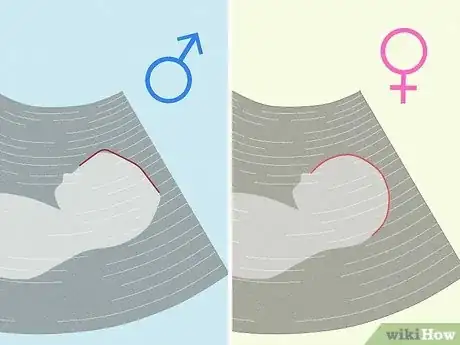

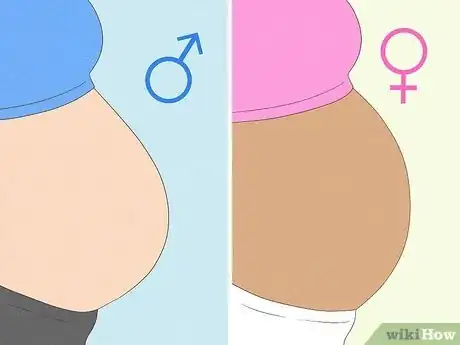


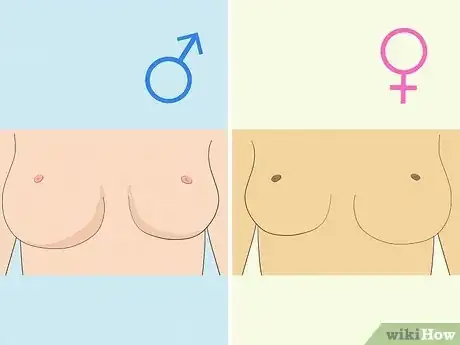
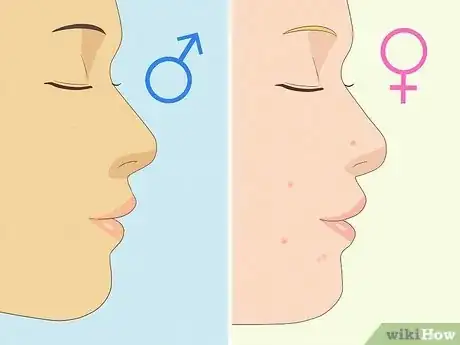



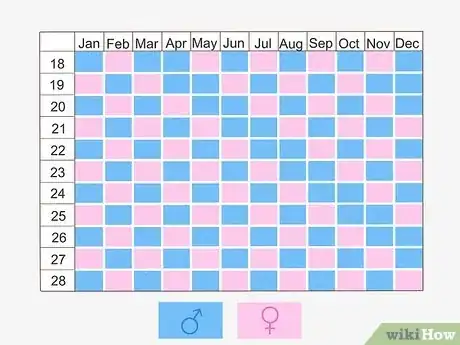


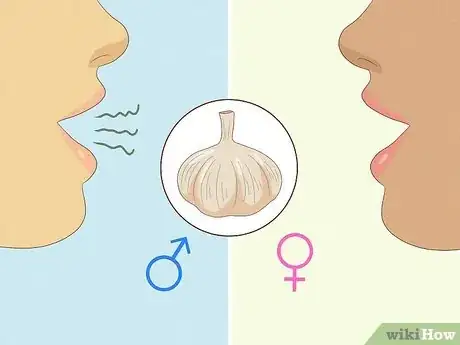
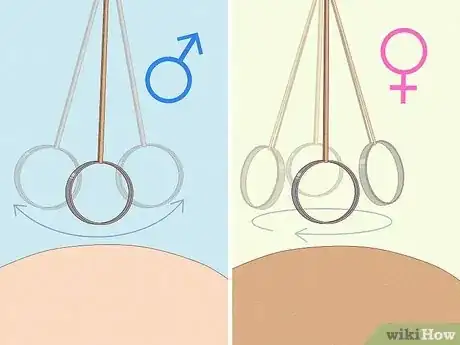

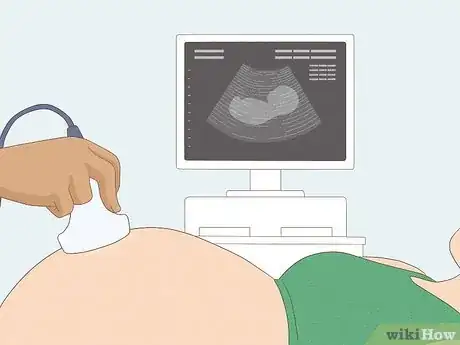
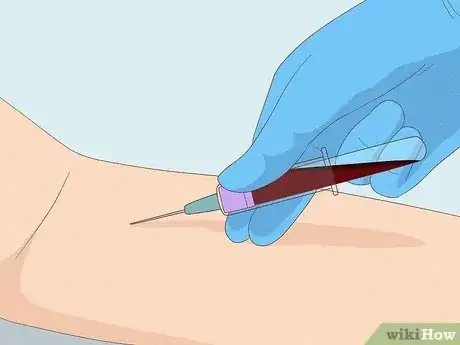
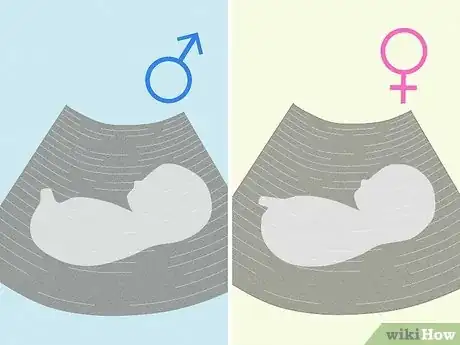





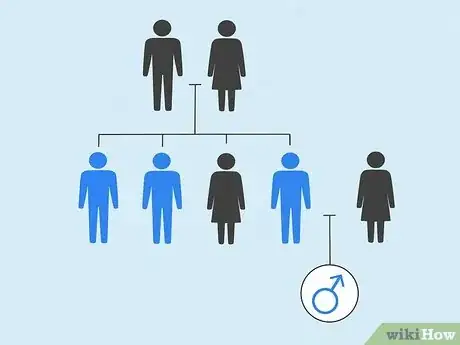
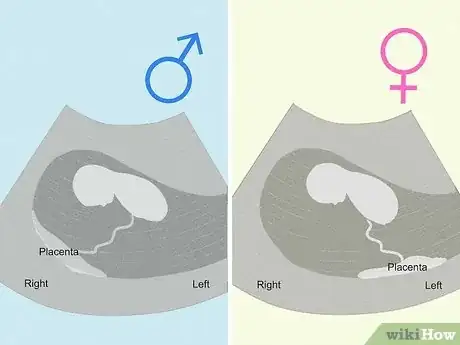



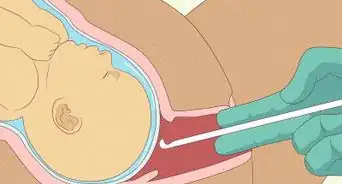





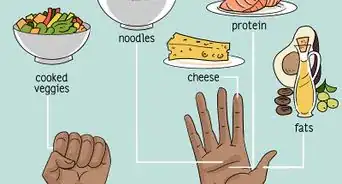












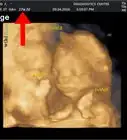


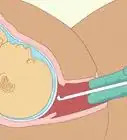



































Medical Disclaimer
The content of this article is not intended to be a substitute for professional medical advice, examination, diagnosis, or treatment. You should always contact your doctor or other qualified healthcare professional before starting, changing, or stopping any kind of health treatment.
Read More...